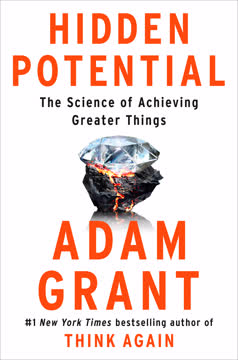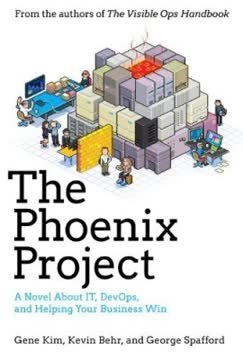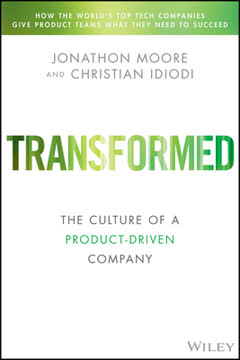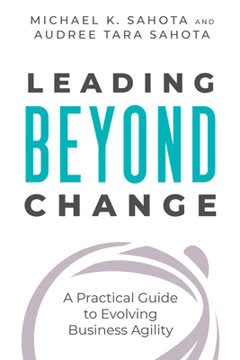Key Takeaways
1. The Core Paradox: You Are the Problem and the Solution.
What lies behind us and what lies before us are tiny matters compared to what lies within us.
Inner transformation. The most profound secret to unlocking high performance in organizations isn't about external strategies or tools; it's about who you are as a leader. Most beliefs about leadership and change are incomplete or incorrect, and even when people know what to do, they don't do it, failing to recognize this discrepancy. True success stems from an inner shift, a personal evolution that impacts everything you do.
Self-reflection is key. We often assume problems are external, collecting data and facts to solve them "out there." However, the greatest value comes from investigating our own role in what's happening. This means examining our own actions, behaviors, and unconscious patterns, embracing the possibility that we contribute to the problem, and using that awareness to become part of the solution. This self-investigation, though uncomfortable, is essential for higher levels of success.
Leadership edges. As you read, reflect on your "leadership edges"—behaviors that limit your effectiveness. These are challenge areas that block desired outcomes. Recognizing these edges, such as difficulty giving up control or disliking following others, is the first step. The book provides tools like the "4A's Leadership Practice" to work through these edges, transforming them into opportunities for growth and greater impact.
2. Evolutionary Leadership: A Shift from Doing to Being.
Evolutionary Leadership is the choice to evolve oneself and develop the capabilities needed to evolve an organization.
Beyond Servant Leadership. While Servant Leadership is a valuable interim step towards people-centric approaches, it's insufficient for true organizational evolution. High-performance leaders are not merely servants; they responsibly wield power and, more importantly, embody a state of being that transmits positive impact. Evolutionary Leadership emphasizes a dual commitment: evolving one's consciousness ("Being") and applying the Laws of Organizational Dynamics ("Doing").
Being over doing. Your way of being is a powerful transmission that impacts every action. While knowing information and applying new practices are important, the deepest impact comes from a shift in your inner state—your mindset or consciousness. This "Being" dimension is often untapped, yet it underpins all effective "Doing." Evolutionary leaders inspire others not just through their actions, but through who they are:
- Self-evolution: A continuous commitment to personal growth.
- Consciousness: Increased awareness of self and existence.
- Being: Operating from an inner state that influences all actions.
- Overcoming ego: Releasing egoic patterns that cause conflict and fear.
- Transmission: Radiating evolutionary capabilities that effortlessly impact the organization.
Modeling the future. To manifest an evolved organization, leaders must embody the evolved state themselves. As a leader shifts consciousness and integrates new ways of functioning, they model a more evolved culture. Each interaction naturally pulls others towards these new norms, accelerating the collective evolution of the organization.
3. Culture is Everything: It Follows Leadership, Not Strategy.
Culture eats strategy for breakfast, and strategy eats tactics for afternoon tea.
Culture's invisible power. Most organizations ignore culture or treat it superficially, despite the widely accepted maxim that "culture eats strategy for breakfast." This neglect leads to a high failure rate for transformation programs (up to 90%). Culture is like the 90% of an iceberg below the waterline—invisible yet dominating. Real, lasting shifts in organizational performance can only come from addressing culture.
Leadership's direct influence. Organizational culture is ultimately a reflection of its leadership. Leaders, through their daily choices, behaviors, and what they pay attention to, create and manage the culture. The more senior the person, the greater their impact. Therefore, culture change is not delegable to HR or a transformation team; it requires "leadership leadership"—leaders who actively model and lead the desired new way of being and working.
Consciousness limits culture. The level of consciousness of an organization cannot exceed that of its leader. If leaders operate from a low level of consciousness (e.g., ego-driven, fear-based), they cannot create a high-performance culture. A shift in leadership's consciousness is necessary to unlock an inspiring shared purpose and foster humility, allowing the organization to evolve beyond traditional, low-performance norms.
4. The Paradox of Power: Influence Over Control.
The moment they are bound, they are no longer a leader or follower.
Beyond command and control. Traditional organizations rely heavily on command and control, fostering disengagement and Theory X workers. This approach, rooted in fear, creates bottlenecks and ineffective decisions. The paradox of power lies in understanding that true leadership is about influence, not coercion. Leaders don't have control over people's effort; they can only inspire willing followers.
Leading through influence. Effective leaders use power sparingly, as a last resort. They understand that "leading is an emergent phenomenon" where followers choose to engage. This means treating everyone like a volunteer, as exemplified by Google VPs and submarine captains who learned to relinquish direct orders and inspire commitment. The "Four Karmas" tool (Peace, Enrich, Energize, Destroy) helps leaders choose the right level of power for each situation, prioritizing positive influence.
Sharing decisions, not just empowering. Empowerment is often vague. The real shift is in sharing decisions iteratively and incrementally. The "Advice Process" allows decisions to be made by those closest to the issue, fostering ownership, engagement, and on-the-job development. Tools like "Decision Cards" clarify who has authority, moving away from the "HiPPO effect" (Highest Paid Person's Opinion) and enabling collective wisdom to drive better outcomes.
5. People First: Unlock High Performance Through Psychological Safety and Engagement.
My supervisor, or someone at work, seems to care about me as a person.
Employees are the core. The "Employees First" principle, championed by leaders like Richard Branson and John Mackey, asserts that happy employees create happy customers, leading to healthy cash flow. This virtuous cycle is the foundation of high-performance organizations. Attracting talent isn't about perks; it's about creating an engaging workplace where people feel deeply respected and cared for as human beings, not just resources.
Psychological safety is paramount. Fear and stress in traditional workplaces impair cognitive function, as the brain diverts resources from the frontal cortex during perceived threat. Psychological safety, defined as the "absence of psychological fear," is the cornerstone of high performance, as validated by Google's Project Aristotle. When people feel safe, they can take risks, ask questions, and contribute their full intelligence, leading to innovation and growth.
Equal voice and engagement. Beyond safety, "equal voice" ensures everyone's contribution is valued. This means creating spaces where all can speak, listen, and challenge ideas, leading to better decisions and fostering psychological safety. Disengagement, a widespread issue (87% globally), stems from environments that suppress desire. Increasing engagement requires leaders to genuinely care, believe in people (Theory Y), and foster an environment where self-interest aligns with organizational purpose, allowing individuals to find joy and meaning in their work.
6. Organizational Evolution: An Emergent Journey, Not a Big Bang Plan.
No problem can be solved from the same level of consciousness that created it.
Beyond "Big Bang" transformations. Traditional "big bang" transformation programs, which treat organizations as predictable machines, consistently fail (90%+ failure rate). They ignore complexity, trigger fear, and reduce psychological safety. Instead, organizational change is an "emergent journey," a messy, organic, nonlinear unfolding. Success comes from embracing complexity and surrendering to what emerges, rather than trying to control it.
Navigating complexity. Organizations operate across a "Complexity Spectrum," from simple (standards) to very high (surrender). Effective evolution requires adapting decision-making approaches to the level of complexity. This means using "safe-to-run experiments" to learn what works, rather than relying on fixed plans. The ability to navigate complexity depends on the organization's consciousness; higher consciousness allows for more effective engagement with complex challenges.
Local evolution, not rollout plans. Culture is ultimately a local phenomenon, a reflection of individual and leadership consciousness. Global shifts emerge from many independent local changes. "Culture Bubbles" are parts of an organization operating with different, more evolved norms. To scale, focus on creating thriving bubbles, building "Culture Adapters" to bridge differences, and patiently waiting for others to be drawn by success, rather than mandating change.
7. Unlearning is the Most Powerful Form of Learning.
The problem is never to get new ideas in; the problem is to get old ideas out.
The brain's bias. Our brains are designed to find answers quickly, not necessarily correctly, leading to generalizations, distortions, and deletions of information. This creates a "reality distortion field" where our beliefs shape our perceptions, often leading to inaccurate models of reality. This inherent bias makes true learning difficult, as our minds resist ideas that conflict with existing beliefs.
Emptying the cup. "Unlearning" is the crucial step beyond typical learning. It means letting go of invalid assumptions and low-fidelity models of reality. When confronted with challenging ideas, the mind tends to reject them to conserve energy. To truly learn, one must "empty the cup"—be open to questioning one's own assumptions and considering alternative models, even if they seem contradictory.
Embrace the tension. The most valuable learning comes from identifying and shedding inaccurate beliefs. This requires a willingness to hold "two opposed ideas in mind at the same time" without immediately resolving the tension. By consciously choosing to question reality and investigate conflicting ideas, leaders can overcome their mind's limitations and develop more accurate, useful models for effective action.
8. The Laws of Organizational Dynamics Govern All Outcomes.
The performance of an organization is a reflection of the level of consciousness.
Interconnected systems. The SHIFT314 Evolutionary Leadership Framework (SELF) and its "Laws of Organizational Dynamics" provide an integrated understanding of how people and structures interact. These laws, like gravity, are always in effect. Ignorance of them doesn't prevent consequences. The "Reality Matrix" map illustrates the cause-and-effect relationships: understanding reality shapes leadership, which shapes the use of power, influencing people, culture, change, and ultimately, results.
Leadership as the lynchpin. The "Evolution of High Performance" map highlights that organizational results are a direct reflection of leadership. To achieve high performance, leaders must first evolve themselves, which then enables the evolution of people, the organizational environment, and new ways of working. This self-evolution is the most rapid and direct means to create lasting success.
Consciousness drives performance. The core principle is that organizational performance follows consciousness. As the collective consciousness of people within an organization evolves to more effective states (e.g., from Traditional/Red/Orange to Green/Teal), so does its ability to navigate complexity and achieve business agility. This means that true, sustainable high performance is not just about changing structures or processes, but about a fundamental shift in the mindset and being of everyone, especially leaders.
Last updated:
Review Summary
The book Leading Beyond Change has received positive reviews, with an overall rating of 4.15 out of 5 on Goodreads. Readers appreciate the authors' expertise and the book's ability to provide a solid framework for organizational change. One reviewer initially considered skipping the book but was ultimately glad they read it, finding valuable insights for personal growth. The book seems to offer a well-structured approach to navigating change in organizations, resonating with readers seeking practical guidance and personal development opportunities.
Similar Books








Download PDF
Download EPUB
.epub digital book format is ideal for reading ebooks on phones, tablets, and e-readers.




